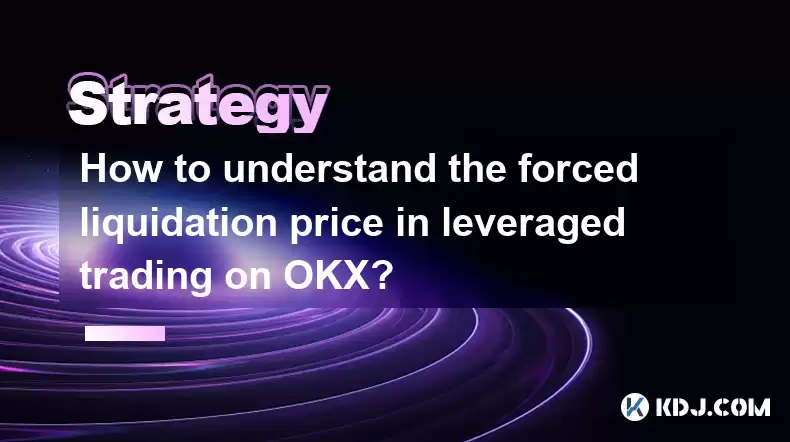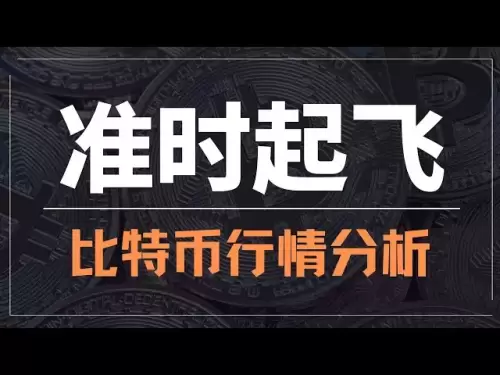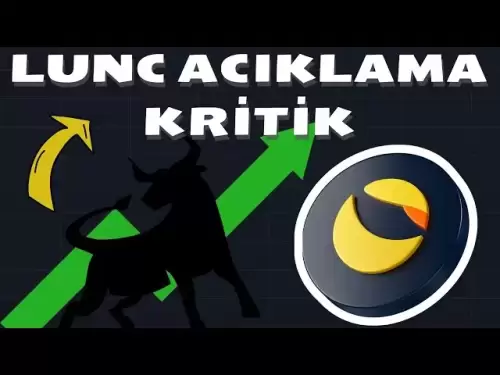-
 Bitcoin
Bitcoin $117600
2.11% -
 Ethereum
Ethereum $3907
6.13% -
 XRP
XRP $3.288
9.68% -
 Tether USDt
Tether USDt $1.000
-0.01% -
 BNB
BNB $784.8
2.00% -
 Solana
Solana $174.3
3.60% -
 USDC
USDC $0.9997
-0.03% -
 Dogecoin
Dogecoin $0.2220
8.04% -
 TRON
TRON $0.3379
0.01% -
 Cardano
Cardano $0.7829
5.46% -
 Stellar
Stellar $0.4348
8.84% -
 Hyperliquid
Hyperliquid $40.50
6.38% -
 Sui
Sui $3.757
7.22% -
 Chainlink
Chainlink $18.41
10.06% -
 Bitcoin Cash
Bitcoin Cash $581.6
1.91% -
 Hedera
Hedera $0.2586
5.37% -
 Avalanche
Avalanche $23.30
4.67% -
 Ethena USDe
Ethena USDe $1.001
0.01% -
 Litecoin
Litecoin $122.0
2.62% -
 UNUS SED LEO
UNUS SED LEO $8.972
-0.23% -
 Toncoin
Toncoin $3.338
1.14% -
 Shiba Inu
Shiba Inu $0.00001282
3.76% -
 Uniswap
Uniswap $10.38
6.88% -
 Polkadot
Polkadot $3.852
4.63% -
 Dai
Dai $1.000
0.02% -
 Bitget Token
Bitget Token $4.463
2.29% -
 Monero
Monero $263.6
-7.22% -
 Cronos
Cronos $0.1496
4.78% -
 Pepe
Pepe $0.00001106
4.91% -
 Aave
Aave $284.3
8.09%
How to understand the forced liquidation price in leveraged trading on OKX?
On OKX, the forced liquidation price is crucial for risk management in leveraged trading, calculated using entry price, leverage, and maintenance margin rate.
Apr 08, 2025 at 03:22 pm

Understanding the forced liquidation price in leveraged trading on OKX is crucial for any trader looking to manage their risk effectively. The forced liquidation price is the point at which your position is automatically closed by the exchange to prevent further losses when the market moves against your trade. This article will delve into the specifics of how this price is calculated, what factors influence it, and how you can use this knowledge to better manage your trading strategies.
What is Forced Liquidation?
Forced liquidation occurs when a trader's position is automatically closed by the exchange due to insufficient margin to cover potential losses. This mechanism is in place to protect both the trader and the exchange from negative account balances. When the market price reaches the forced liquidation price, the exchange will close the position to minimize losses.
Calculation of Forced Liquidation Price
The forced liquidation price on OKX depends on several factors, including the entry price, the amount of leverage used, and the maintenance margin requirement. Here's how it's typically calculated:
Long Position: For a long position, the forced liquidation price is calculated as:
[
\text{Forced Liquidation Price} = \frac{\text{Entry Price} \times (1 - \text{Maintenance Margin Rate})}{\text{1 + (Maintenance Margin Rate} \times \text{Leverage})}
]Short Position: For a short position, the forced liquidation price is calculated as:
[
\text{Forced Liquidation Price} = \frac{\text{Entry Price} \times (1 + \text{Maintenance Margin Rate})}{\text{1 - (Maintenance Margin Rate} \times \text{Leverage})}
]
These formulas ensure that the position is closed before the account balance drops below zero, taking into account the leverage and the maintenance margin rate set by OKX.
Factors Influencing the Forced Liquidation Price
Several factors can influence the forced liquidation price on OKX:
Leverage: Higher leverage increases the risk of reaching the forced liquidation price sooner. The more leverage you use, the smaller the price movement required to hit your liquidation price.
Maintenance Margin Rate: This is the minimum amount of margin required to keep a position open. If the account balance falls below this rate, the position will be liquidated. OKX sets different maintenance margin rates for different trading pairs and leverage levels.
Position Size: Larger positions require more margin to maintain, which can affect the forced liquidation price. A larger position size means a smaller price movement is needed to trigger liquidation.
Market Volatility: High volatility can lead to rapid price changes, increasing the likelihood of hitting the forced liquidation price.
How to Calculate Your Forced Liquidation Price
To calculate your forced liquidation price manually, you need to know your entry price, the leverage you're using, and the maintenance margin rate for your trading pair on OKX. Here's how you can do it:
- Identify your entry price: This is the price at which you opened your position.
- Determine your leverage: This is the amount of leverage you're using for your trade.
- Find the maintenance margin rate: This can be found in the OKX trading interface or documentation for your specific trading pair.
- Use the formulas provided above to calculate the forced liquidation price for your long or short position.
Practical Example of Forced Liquidation Price Calculation
Let's walk through an example to illustrate how to calculate the forced liquidation price on OKX:
Scenario: You open a long position on BTC/USDT with an entry price of $30,000, using 10x leverage. The maintenance margin rate for this trading pair is 0.5%.
Calculation:
[
\text{Forced Liquidation Price} = \frac{30000 \times (1 - 0.005)}{1 + (0.005 \times 10)} = \frac{30000 \times 0.995}{1 + 0.05} = \frac{29850}{1.05} \approx 28428.57
]
In this example, if the price of BTC/USDT falls to $28,428.57, your position will be liquidated.
Managing Risk to Avoid Forced Liquidation
To avoid forced liquidation, traders need to manage their risk effectively. Here are some strategies:
Use Stop-Loss Orders: Setting a stop-loss order can help close your position before it reaches the forced liquidation price. This can be particularly useful in highly volatile markets.
Monitor Your Margin Level: Keep an eye on your margin level and add more funds if necessary to maintain your position.
Reduce Leverage: Using less leverage can increase the buffer between the current market price and your forced liquidation price, reducing the risk of liquidation.
Diversify Your Portfolio: Spreading your investments across different assets can help mitigate the risk of a single position being liquidated.
Using OKX Tools to Monitor Forced Liquidation Price
OKX provides several tools that can help you monitor and manage your forced liquidation price:
Position Management Interface: This interface shows your current positions, including the entry price, leverage, and the calculated forced liquidation price.
Risk Management Alerts: You can set up alerts to notify you when your position is approaching the forced liquidation price, giving you time to take action.
Margin Calculator: OKX offers a margin calculator tool that can help you estimate your forced liquidation price based on different scenarios.
Frequently Asked Questions
Q1: Can I change the forced liquidation price on OKX?
No, the forced liquidation price is automatically calculated by OKX based on your entry price, leverage, and the maintenance margin rate. However, you can influence it by adjusting your leverage or adding more margin to your account.
Q2: What happens if my position is liquidated on OKX?
If your position is liquidated, OKX will close your position at the market price to prevent further losses. Any remaining balance after liquidation will be credited to your account, but you may incur losses if the liquidation price is unfavorable.
Q3: Is there a way to avoid forced liquidation on OKX?
While forced liquidation cannot be entirely avoided, you can reduce the risk by using stop-loss orders, monitoring your margin level, reducing leverage, and diversifying your portfolio.
Q4: How does OKX handle partial liquidation?
OKX may implement partial liquidation in some cases, where only a portion of your position is closed to bring your account back within the maintenance margin requirements. This can help preserve part of your position while minimizing losses.
Disclaimer:info@kdj.com
The information provided is not trading advice. kdj.com does not assume any responsibility for any investments made based on the information provided in this article. Cryptocurrencies are highly volatile and it is highly recommended that you invest with caution after thorough research!
If you believe that the content used on this website infringes your copyright, please contact us immediately (info@kdj.com) and we will delete it promptly.
- EigenLayer, Restaking, and Ethereum: Navigating the Hype and the Hazards
- 2025-08-08 06:30:12
- Super Bowl 59: Jon Batiste to Jazz Up the National Anthem
- 2025-08-08 06:30:12
- Cold Wallet Crypto in 2025: The Future is Now, Ya'll
- 2025-08-08 05:10:13
- MAGACOIN, SOL, and ADA: A Tale of Shifting Tides in Crypto
- 2025-08-08 05:10:13
- SHIB Price, PEPE, and the Memecoin Supercycle: Who Will Reign Supreme?
- 2025-08-08 05:50:12
- Pudgy Penguins Price Prediction: Google Trends & Breakout Signals
- 2025-08-08 05:50:12
Related knowledge

How to avoid common crypto investment mistakes?
Jul 13,2025 at 01:35am
Understanding the Risks of Crypto InvestmentInvesting in cryptocurrency can be highly rewarding, but it also comes with significant risks. One of the ...

What is a long-short crypto strategy?
Jul 15,2025 at 10:56am
Understanding the Basics of a Long-Short Crypto StrategyA long-short crypto strategy is an investment approach where traders simultaneously take long ...

What is a long-short crypto strategy?
Jul 11,2025 at 01:28pm
Understanding the Basics of Long-Short Crypto StrategyA long-short crypto strategy is an investment approach where traders take both long and short po...

How to use the RSI indicator for crypto?
Jul 12,2025 at 03:56pm
Understanding the RSI Indicator in Cryptocurrency TradingThe Relative Strength Index (RSI) is a momentum oscillator used to measure the speed and chan...

Is copy trading a good strategy for crypto beginners?
Jul 12,2025 at 08:28am
Understanding Copy Trading in the Cryptocurrency MarketCopy trading is a strategy where novice traders replicate the trades of experienced investors a...

How to build a crypto portfolio with $1000?
Jul 13,2025 at 08:14pm
Understanding the Basics of Cryptocurrency InvestmentBuilding a crypto portfolio with $1000 starts with understanding the fundamentals of cryptocurren...

How to avoid common crypto investment mistakes?
Jul 13,2025 at 01:35am
Understanding the Risks of Crypto InvestmentInvesting in cryptocurrency can be highly rewarding, but it also comes with significant risks. One of the ...

What is a long-short crypto strategy?
Jul 15,2025 at 10:56am
Understanding the Basics of a Long-Short Crypto StrategyA long-short crypto strategy is an investment approach where traders simultaneously take long ...

What is a long-short crypto strategy?
Jul 11,2025 at 01:28pm
Understanding the Basics of Long-Short Crypto StrategyA long-short crypto strategy is an investment approach where traders take both long and short po...

How to use the RSI indicator for crypto?
Jul 12,2025 at 03:56pm
Understanding the RSI Indicator in Cryptocurrency TradingThe Relative Strength Index (RSI) is a momentum oscillator used to measure the speed and chan...

Is copy trading a good strategy for crypto beginners?
Jul 12,2025 at 08:28am
Understanding Copy Trading in the Cryptocurrency MarketCopy trading is a strategy where novice traders replicate the trades of experienced investors a...

How to build a crypto portfolio with $1000?
Jul 13,2025 at 08:14pm
Understanding the Basics of Cryptocurrency InvestmentBuilding a crypto portfolio with $1000 starts with understanding the fundamentals of cryptocurren...
See all articles

























































































